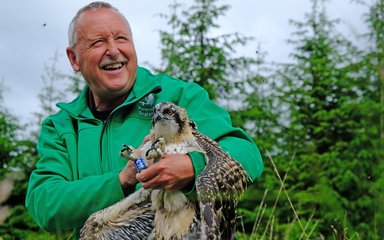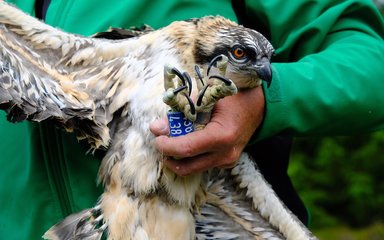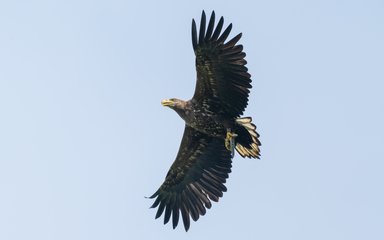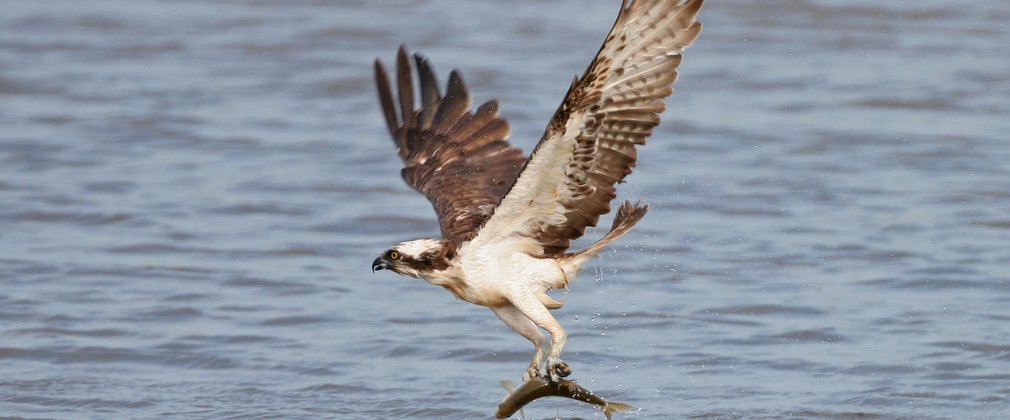
The osprey (Pandion haliaetus) is a large, fish-eating bird of prey. Historically they were found all across the country, but persecution from egg collectors caused the population to crash, and they became extinct in England in 1847. After re-colonising Scotland in the 1950s, ospreys have been increasing southwards.
In 2009, after an absence of almost 200 years, ospreys returned to nest in Kielder Forest, Northumberland. With a growing population once again, they are now being seen at locations across the country.
Osprey statistics
- lifespan: 20-25 years
- length: males 56-59cm and females 57-62cm
- weight: males 1.4kg and females 1.6kg
- wingspan: males 1.5m and females 1.6m
Kielder's ospreys need your help
2024 was a terrible year for the ospreys in Kielder Forest. The unseasonably wet weather, low temperatures and high winds resulted in the death of 12 chicks - the worst loss in 15 years.
Donating to our osprey appeal will help us improve nesting conditions to better protect future chicks and invest in better equipment. This appeal is being match-funded by British Airways - so for every £1 donated, £2 goes to the project.
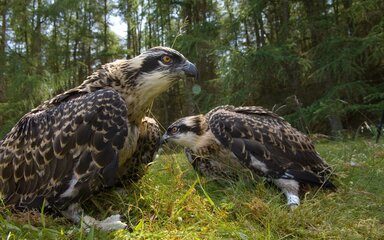
Osprey habitat, breeding and development
The main habitat of ospreys are large bodies of water or estuaries, but small ponds are sometimes used if suitable food is around; they eat both freshwater and saltwater fish. They also nest in woodland edges or glades with dead trees. Ospreys build distinctive nests, called eyries, in open trees but will also readily take to artificial nests built in their preferred locations by conservationists.
Ospreys start breeding between three and five years of age. Females lay between one and four eggs, although it's common for one egg not to hatch. An average brood size is two fledglings and the young birds become independent between five and six months. Sadly, human disturbance and other threats mean that many osprey young die before they are old enough to breed.
Migration and threats
Osprey migrate from Britain in August and September, mainly to West Africa. They have no natural predator but come under threat from human disturbance of nesting sites, egg collecting and shooting while on migration.
Did you know? Ospreys can travel over 3,000 miles whilst on migration!
Osprey identification
Adult ospreys have a white head with a speckled crown and distinctive black eye-stripe. Upper parts are a dark brown while the underside is white with buff markings on the upper breast.
Juveniles are similar to adults, but have lighter brown upper parts with feathers edged in a pale buff colour.
